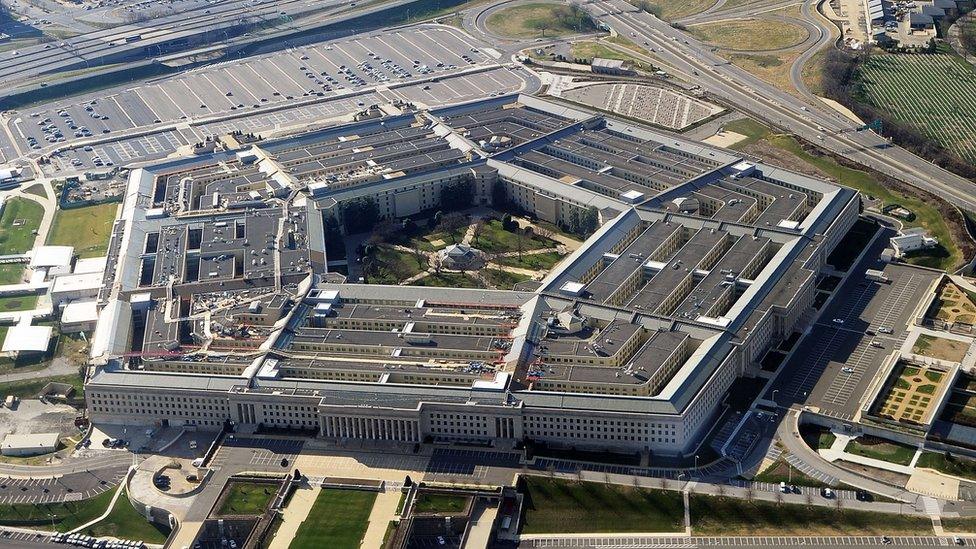Have RAF air strikes against IS killed no civilians?
- Published

For almost two years, RAF jets have been targeting the so-called Islamic State (IS). British warplanes have now carried out more than 1,000 air strikes, firing more than 2,000 bombs and missiles.
And yet the Ministry of Defence still says there have been "no known" civilian casualties. In November last year the Defence Secretary Michael Fallon even suggested the use of precision weapons had "eliminated" civilian casualties.
Is that plausible? The MOD declined to be interviewed about the subject, but issued this statement: "We can't completely eliminate the risk of civilian casualties, but we carefully mitigate that risk through strict targeting procedures."
Its assessment was that "we've avoided civilian casualties so far in this conflict".
It's fair to say the US-led coalition is trying hard to avoid civilian casualties. Unlike Russia, coalition warplanes only use precision-guided weapons - often directed by GPS or laser.
Air Commodore Dai Wittingham, who ran the RAF's air campaign in Afghanistan, says there's "excruciating" care taken to avoid the loss of innocent life. Intelligence analysts examine each target carefully before and after each strike using detailed aerial photos and video.

The Pentagon says US airstrikes in Syria and Iraq have been responsible for 55 civilian deaths
Another senior RAF officer also told me the UK was more "discriminatory" than other coalition countries. The RAF often turns down targets if it thinks there might be a risk to civilians on the ground.
Like other coalition pilots they've also redirected bombs and missiles at the last minute. In every case when they are about to hit a "hot target" pilots look for an area nearby where they can "shift cold" to avoid civilians who might suddenly appear.
But ultimately, as one pilot told me, however hard you try to avoid civilian casualties "you still can't see through walls and rubble".
Major General James Poss, a former Director of Intelligence in the US Air Force, says there is always doubt: "In the fog of war you can never know everything."
And the fog of war hangs heaviest in urban areas where IS hides alongside civilians. The task is all the more difficult with the coalition largely having to rely on local forces as its "eyes on the ground".
Only one of the 12 coalition nations taking part in air strikes has so far accepted that it's caused civilian casualties. True, the United States has carried out most of the 15,000 air strikes in the war so far but it also took more than a year before it acknowledged the first and even now its assessment looks remarkably low.

The RAF deploys precision weapons, like this Paveway IV laser guided bomb
The Pentagon says US air strikes have been responsible for 55 civilian deaths, but there is at least an acknowledgement of the realities of war. Commander Kyle Raines, a spokesman for Central Command, says there will always be situations when civilians are placed into "harm's way".
He adds that, while you can mitigate the risk to civilians, you "can't avoid it completely". Denmark, another member of the coalition, has also recently acknowledged that civilian deaths are "unavoidable" as the focus turns to the heavily-populated cities of Raqqa and Mosul.
Airwars, which is analysing reports of civilian casualties, estimates that more than 1,500 civilians have been killed in Iraq and Syria in coalition air strikes so far. It questions the MOD's claim to have been responsible for none.
Chris Woods from Airwars points out a discrepancy with other recent conflicts in which civilian casualties were probably under-reported. In Afghanistan, on average, one civilian died in every 10 air strikes. He says in Iraq and Syria "we're being asked to believe" that one civilian is being killed in every 350 air strikes.
In Afghanistan, the RAF used the same precision weapons and had the advantage of British boots on the ground. But it still made mistakes - admitting to at least one incident in which civilians were killed.
Britain is strangely alongside Russia in claiming that its not been responsible for any civilian casualties. That seems unfortunate because, unlike Russia, the RAF is making efforts to avoid the loss of innocent life.
- Published30 April 2016
